Making
Summer Count
How Summer Programs Can Boost Childrens Learning
JENNIFER SLOAN MCCOMBS  CATHERINE H. AUGUSTINE
CATHERINE H. AUGUSTINE
HEATHER L. SCHWARTZ  SUSAN J. BODILLY
SUSAN J. BODILLY  BRIAN MCINNIS
BRIAN MCINNIS
DAHLIA S. LICHTER  AMANDA BROWN CROSS
AMANDA BROWN CROSS
Commissioned by

The research in this report was produced within RAND Education, a unit of the RAND Corporation. The research was commissioned by The Wallace Foundation.
Library of Congress Cataloging-in-Publication Data is available for this publication.
ISBN 978-0-8330-5269-8
The RAND Corporation is a nonprofit institution that helps improve policy and decisionmaking through research and analysis. RANDs publications do not necessarily reflect the opinions of its research clients and sponsors.
RAND is a registered trademark.
Cover photograph courtesy Media Bakery
Copyright 2011 RAND Corporation
Permission is given to duplicate this document for personal use only, as long as it is unaltered and complete. Copies may not be duplicated for commercial purposes. Unauthorized posting of RAND documents to a non-RAND website is prohibited. RAND documents are protected under copyright law. For information on reprint and linking permissions, please visit the RAND permissions page (http://www.rand.org/publications/permissions.html).
Published 2011 by the RAND Corporation
1776 Main Street, P.O. Box 2138, Santa Monica, CA 90407-2138
1200 South Hayes Street, Arlington, VA 22202-5050
4570 Fifth Avenue, Suite 600, Pittsburgh, PA 15213-2665
RAND URL: http://www.rand.org/
To order RAND documents or to obtain additional information, contact
Distribution Services: Telephone: (310) 451-7002;
Fax: (310) 451-6915; Email: order@rand.org
Summer learning programs have the potential to help children and youth improve their academic and other outcomes. This is especially true for children from low-income families who might not have access to educational resources throughout the summer months and for low-achieving students who need additional time to master academic content. However, summer learning programs are often an afterthought of school districts or not offered at all, especially in restrictive funding environments.
To focus attention on the potential of such programs, this monograph reviews the literature on summer learning loss and the effectiveness of summer learning programs, determines key cost drivers of and available funds for summer programs, and gathers information about how such programs operate in district and city contexts, including facilitators and challenges.
The findings should be of interest to policymakers and practitioners involved in improving the performance of and expanding opportunities for low-income and low-achieving students, including school district and city leaders, the National Summer Learning Association, the Council of the Great City Schools, the U.S. Department of Education, funders of summer learning programs, state departments of education, state legislators, and the education research community.
This research was conducted by RAND Education, a unit of the RAND Corporation, and sponsored by The Wallace Foundation, which seeks to support and share effective ideas and practices to improve learning and enrichment opportunities for children. Its current objectives are to improve the quality of schools, primarily by developing and placing effective principals in high-need schools; improve the quality of and access to out-of-school-time programs through coordinated city systems and by strengthening the financial management skills of providers; integrate in- and out-of-school learning by supporting efforts to reimagine and expand learning time during the traditional school day and year as well as during the summer months, helping to expand access to arts learning, and using technology as a tool for teaching and promoting creativity and imagination. For more information about research on these and other related topics, please visit The Wallace Foundation Knowledge Center at www.wallacefoundation.org.
Contents
CHAPTER ONE
Introduction
CHAPTER TWO
Time, Learning, Learning Decay, and Summer Learning Loss
CHAPTER THREE
Effectiveness of Summer Learning Programs
CHAPTER FOUR
Costs of Summer Programming
CHAPTER FIVE
Creating and Maintaining Summer Learning Programs: Lessons from the Field
CHAPTER SIX
Conclusions and Recommendations
Appendix
Approach to Cost Estimates for Summer Learning Programs
During summer vacation, many students lose knowledge and skills. By the end of summer, students perform, on average, one month behind where they left off in the spring. Of course, not all students experience average losses. Summer learning loss disproportionately affects low-income students. While all students lose some ground in mathematics over the summer, low-income students lose more ground in reading, while their higher-income peers may even gain. Most disturbing is that summer learning loss is cumulative; over time, the difference between the summer learning rates of low-income and higher-income students contributes substantially to the achievement gap.
Because many students lose learning over the summer and some students need more time on task to master content, participation in summer learning programs should mitigate learning loss and could even produce achievement gains. Indeed, educators and policymakers are increasingly promoting summer learning as a key strategy to improving the achievement of low-performing students. In 2009, a Johns Hopkins Universitybased center for summer learning became an independent organization, the National Summer Learning Association, providing resources, guidance, and expertise to the summer learning community. In 2010, President Obama noted, Students are losing a lot of what they learn during the school year during the summer. Earlier that year, First Lady Michelle Obama launched United We Serve: Lets Read, Lets Move, a program that encourages Americans to fight the summer reading gap, acknowledging that youth who do not read during the summer can lose months of academic progress (White House, 2010).
Study Purpose and Research Questions
The Wallace Foundation is encouraging the establishment of district-supported summer learning programs, particularly for urban students in grades 18. To support this effort, The Foundation asked RAND to conduct a study to assess both the need for summer learning programs and the existing evidence on effective, viable, and sustainable summer learning programs in urban districts.
In this monograph, we address the following research questions:
1. What is the nature of summer learning loss?
2. Are summer learning programs effective in improving student achievement? What are the elements of effective summer programs?
3. How much do summer learning programs cost?
4. What are the facilitators and challenges to implementing summer programs?
To answer our first two research questions, we conducted literature reviews on summer learning loss and the effectiveness of summer learning programs. To examine cost, we conducted a literature review to identify common funding sources for summer programs, collected detailed cost data from seven summer learning programs, and determined their costs and the primary reasons for the variation among them. To address the final question, regarding facilitators and challenges to implementing such programs, we conducted 15 telephone interviews: eight with providers (either school districts or programs affiliated with school districts) and seven with national nondistrict providers.
Next page
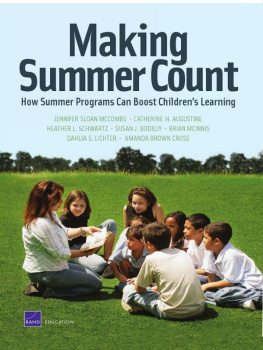
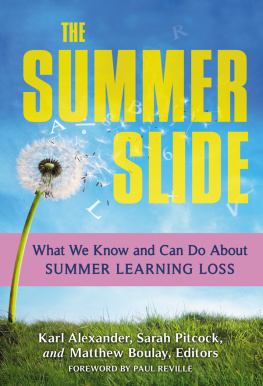






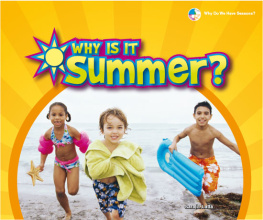
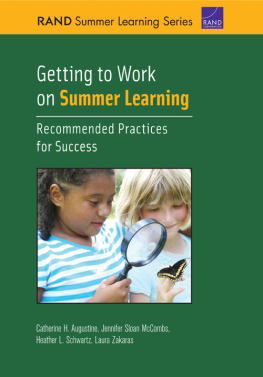
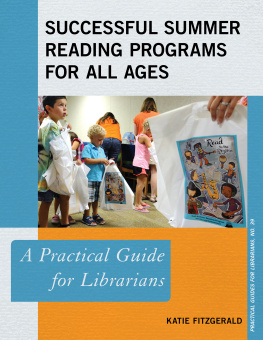


 CATHERINE H. AUGUSTINE
CATHERINE H. AUGUSTINE SUSAN J. BODILLY
SUSAN J. BODILLY  BRIAN MCINNIS
BRIAN MCINNIS AMANDA BROWN CROSS
AMANDA BROWN CROSS